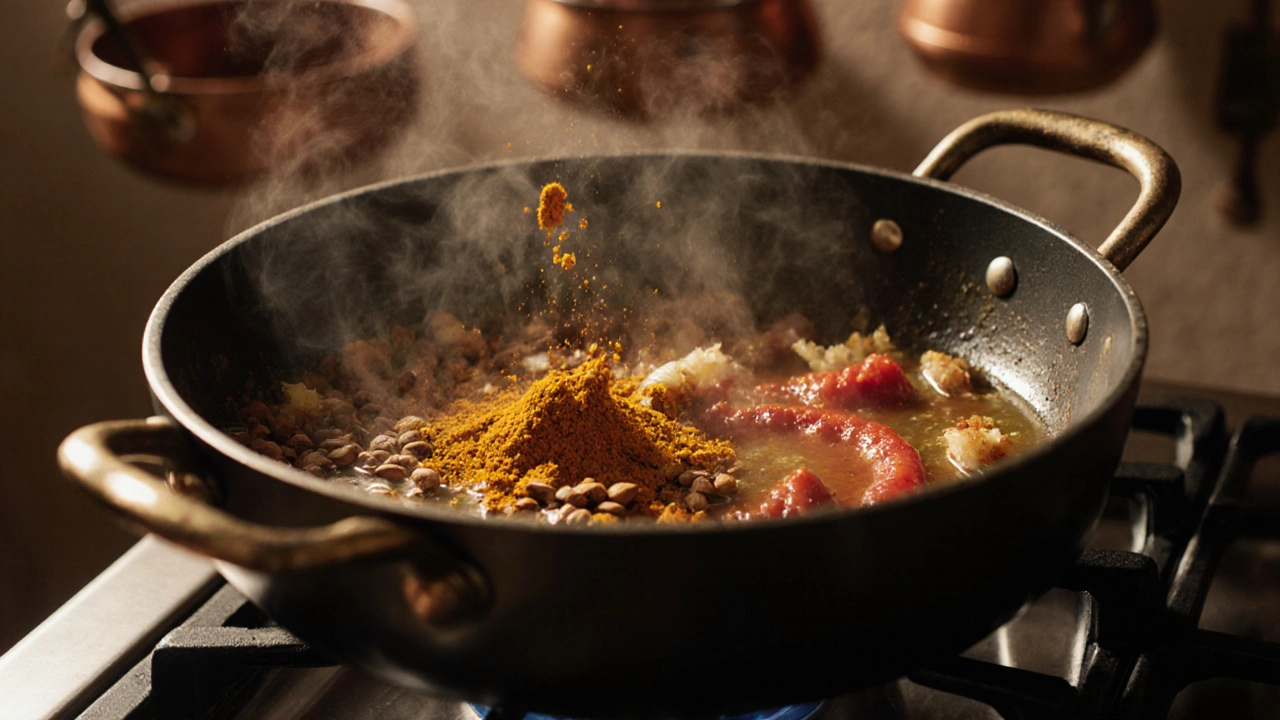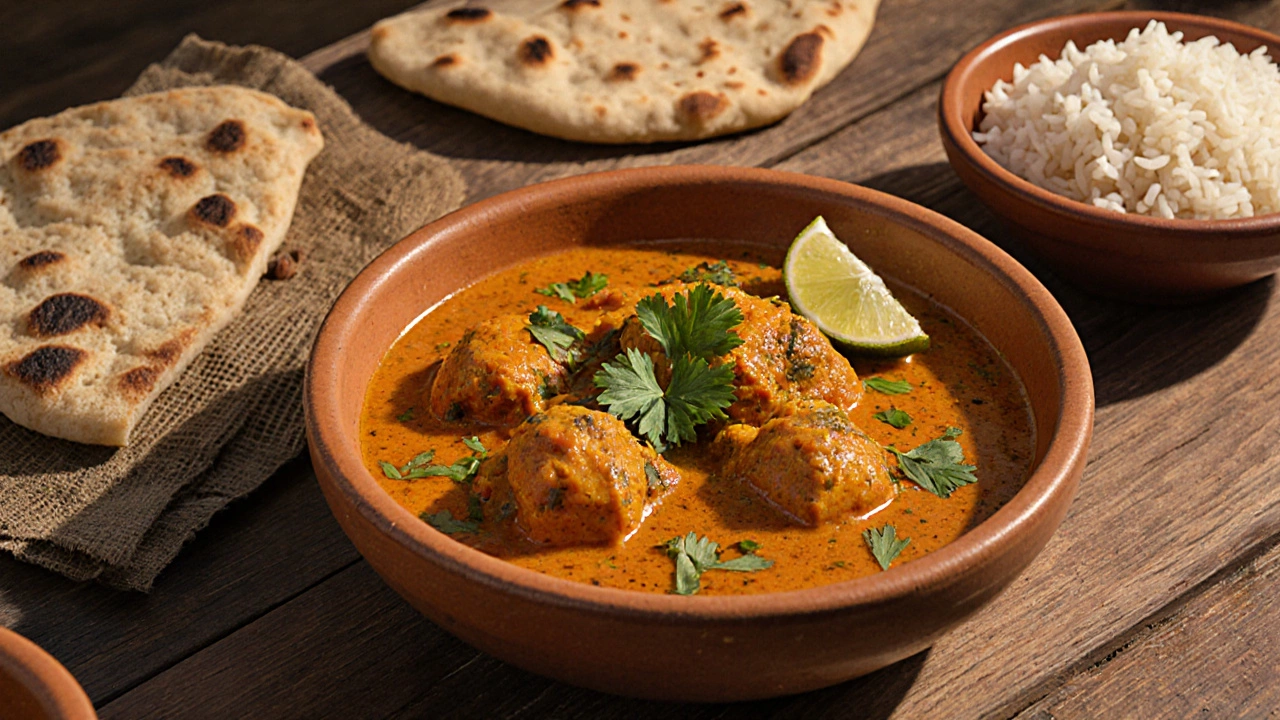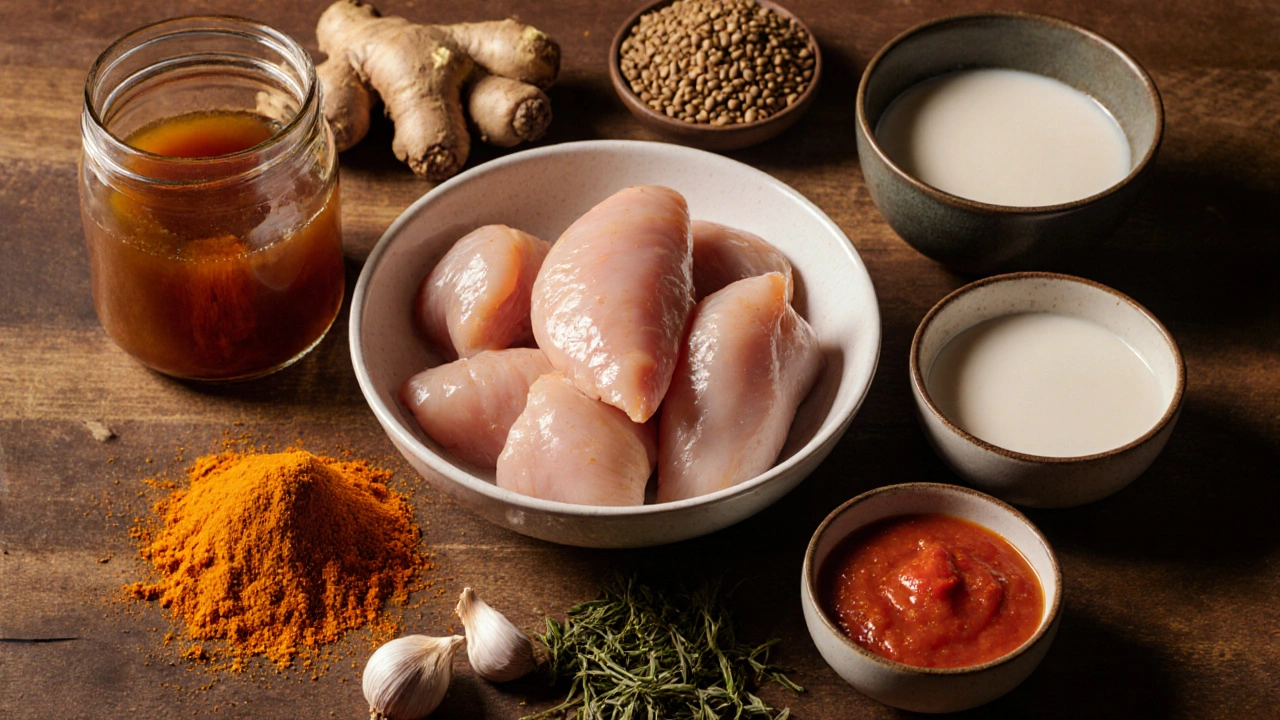16 Oct 2025
- 0 Comments
Curry Spice Calculator
Scale Your Spice Blend
Adjust spice quantities based on the number of servings. The calculator uses the recipe's standard ratios from the article.
Ever wondered why some chicken curry dishes explode with flavor while others fall flat? The answer isn’t magic-it’s a mix of the right ingredients, technique, and timing. Below you’ll find the exact elements that turn an ordinary pot of sauce into a crowd‑pleasing masterpiece, plus a step‑by‑step recipe you can trust.
What Makes a Curry Taste Great?
At its core, a good curry balances three pillars: heat, aroma, and depth. Heat comes from chilies or pepper, aroma from toasted spices, and depth from slow cooking and layering flavors. When any of these pillars is missing, the dish feels one‑dimensional.
Think of a curry like a symphony. The drumbeat of Garam Masala is the percussion, keeping rhythm. The woodwinds-Turmeric, Cumin, and Coriander-add color and melody. Finally, the bass line of Fresh Ginger and Garlic grounds the whole piece.
Core Ingredients You Can’t Skip
- Chicken - Bone‑in pieces give the richest broth. If you prefer a quicker cook, boneless works, but add a splash of chicken stock to compensate.
- Onion - Sweet, caramelized onions form the flavor base.
- Tomato Purée - Provides acidity and a subtle sweetness that brightens the spice blend.
- Coconut Milk - Adds silkiness and balances heat.
- Fenugreek Leaves (kasuri methi) - Imparts a lingering, slightly bitter note that is the hallmark of many authentic curries.
Keep these staples on hand; they’re the foundation for any great curry.
Building the Perfect Spice Blend
While pre‑made curry pastes are handy, a homemade blend lets you control heat, aroma, and freshness. Here’s a quick formula you can tweak:
- 2tbsp ground Coriander
- 1tbsp ground Cumin
- 1tsp Turmeric
- ½tsp paprika (for color)
- ¼tsp cayenne (adjust to taste)
- 1tsp garam masala (add at the end for fragrance)
Toast the whole spices-cumin seeds, coriander seeds, and a few dried red chilies-in a dry pan for 30seconds until they pop. Then grind them fresh. This step is the secret to unlocking deep, layered aroma.

Step‑by‑Step Chicken Curry Recipe
- Prep the chicken: Pat 1kg chicken pieces dry, season with salt and a pinch of pepper.
- Sauté the base: In a large pot, heat 3tbsp ghee or oil over medium heat. Add 2‑large chopped Onion and cook until golden (about 8minutes). Stir in 4minced garlic cloves and 2inch grated Fresh Ginger; cook 2minutes.
- Introduce spices: Sprinkle the toasted spice blend from the previous section, plus 1tsp salt. Fry for 1‑2minutes, letting the oil turn ruby‑red.
- Add tomatoes: Stir in 1cup tomato purée; simmer until the oil separates from the masala (about 5minutes).
- Brown the chicken: Add the seasoned chicken pieces, turning to coat. Cook 5minutes until the meat starts to brown.
- Simmer with liquid: Pour in 1½cups coconut milk and ½cup water (or chicken stock). Bring to a gentle boil, then reduce to a low simmer. Cover and cook 20‑25minutes, stirring occasionally.
- Finish the flavor: Sprinkle 1tsp garam masala and crumble 1tbsp dried Fenugreek Leaves over the top. Cook uncovered for another 5minutes.
- Serve: Garnish with fresh cilantro, a squeeze of lime, and serve with steamed rice or naan.
Follow these steps and you’ll end up with a fragrant, balanced, and unforgettable Chicken Curry.
Common Mistakes and How to Fix Them
- Burning the spices: If the masala turns bitter, you’ve cooked it too long or on too high heat. Lower the flame and add a splash of water to de‑glaze.
- Using too much water: A watery curry lacks body. Always start with coconut milk; add water only if the sauce gets too thick.
- Skipping the toast step: Untoasted spices taste flat. Invest a minute in toasting for big flavor gains.
- Overcrowding the pan: Crowding prevents browning. Cook chicken in batches if necessary.

Quick Checklist for a Perfect Curry
- Fresh whole spices - toast and grind.
- Use a good quality ghee or oil for depth.
- Caramelize onions fully; they’re the flavor backbone.
- Balance heat with acidity (tomato) and richness (coconut milk).
- Finish with garam masala and fenugreek leaves for aroma.
| Aspect | Homemade Spice Mix | Store‑bought Curry Paste |
|---|---|---|
| Flavor Control | High - you set heat & aromatic balance | Low - limited to manufacturer’s blend |
| Freshness | Very fresh when ground minutes before cooking | Often contains preservatives |
| Cost per serving | Cheap - bulk spices are inexpensive | More expensive per jar |
| Prep Time | 5‑10minutes extra for toasting & grinding | Immediate - just open and stir |
| Customization | Unlimited - add herbs, nuts, or adjust heat | Fixed formula |
Frequently Asked Questions
Can I use boneless chicken for this curry?
Yes, but add a splash of chicken stock or extra coconut milk to keep the broth rich, since boneless pieces release less gelatin.
What’s the difference between garam masala and curry powder?
Garam masala is added at the end of cooking for a fragrant finish, while curry powder is usually cooked early and contains turmeric for color.
Can I freeze leftover chicken curry?
Absolutely. Cool it quickly, store in airtight containers, and it will keep for up to 2months. Reheat gently to avoid curdling the coconut milk.
Why does my curry taste “flat”?
Flatness usually means missing acidity or depth. Add a splash of lime juice, a pinch of sugar, or a bit more toasted spices to lift the flavor.
Is it okay to substitute yogurt for coconut milk?
You can, but add it at the very end over low heat to prevent curdling. Yogurt gives a tangier profile, while coconut milk adds sweetness and silkiness.
